Guilo Guilo: the art of kaiseki in Amelie's eighteenth arrondissement
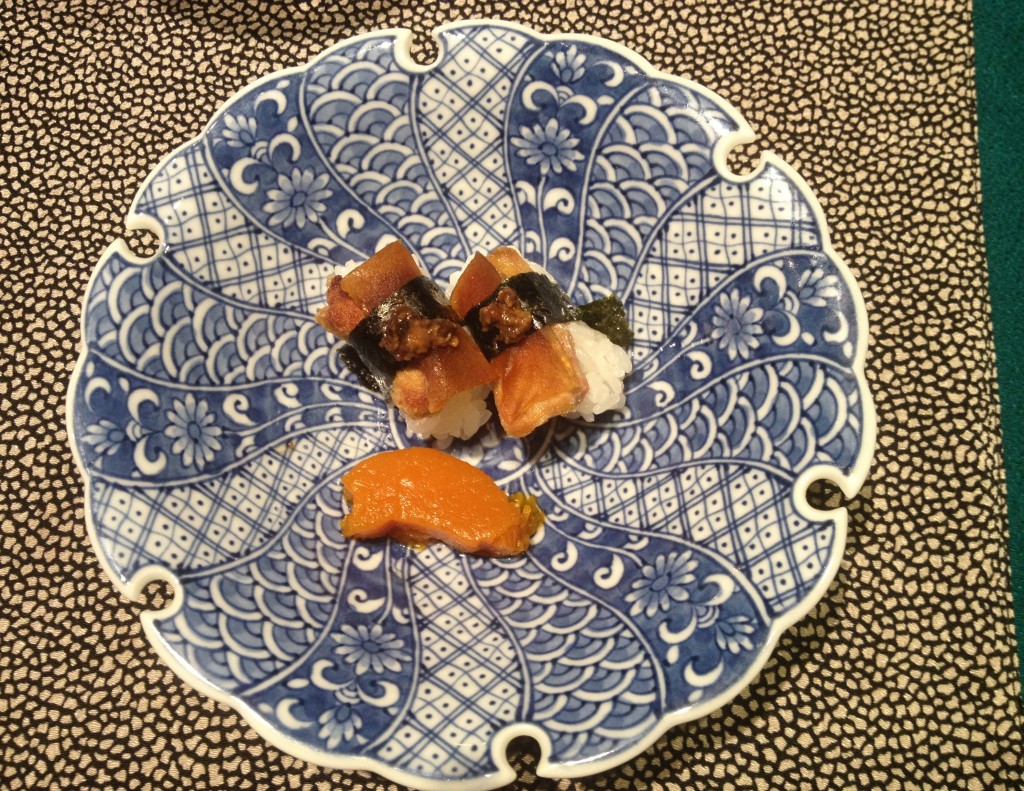
Kaiseki is a traditional multi-course Japanese dinner served on individual trays as a set-menu at restaurants. In Japan it is the highest-level of culinary skills and gastronomic experience that balances the taste, texture, appearance, and colors of the food served. Today it is very popular in Kyoto and it evolved from the small meals served along the tea ceremony (chanoyu). Any Japanese food lover must try this haute gastronomy of Asia.
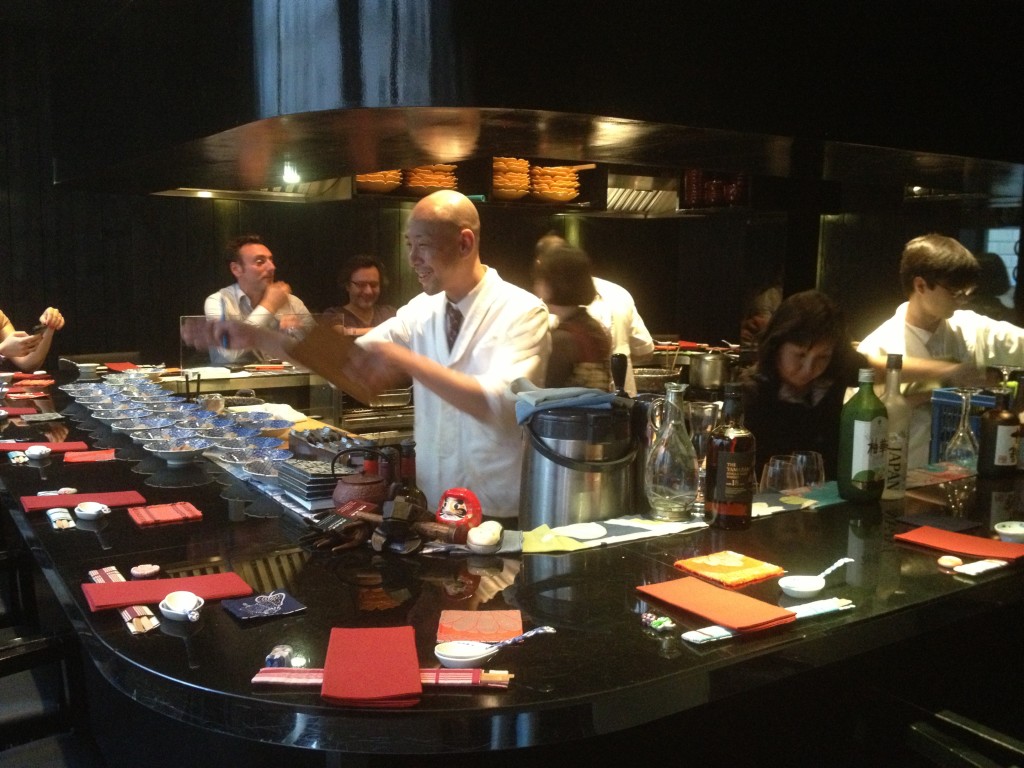
Atmosphere: Convivial, lively and for serious japanese food lovers memorable experience. Set your watch right, so you come on time, because at Guilo Guilo eating is a ceremony and it starts at the same time. Here, pace is as important as the food itself. As you enter the squeezed Tokio-style premises together with all the other excited diners, the chef’s eyes meet your own as he greets every single customer before the food fiesta begins. It is fun to share the spiritually enriching dinner in the main room where the kitchen is set in the middle of the bar, so each customer can directly interact with the chef and his staff. It is equally enjoyable though to sit at one of the two tables in the private back room. There are two seatings at 7pm and 9:30pm. Reservations are highly recommended!
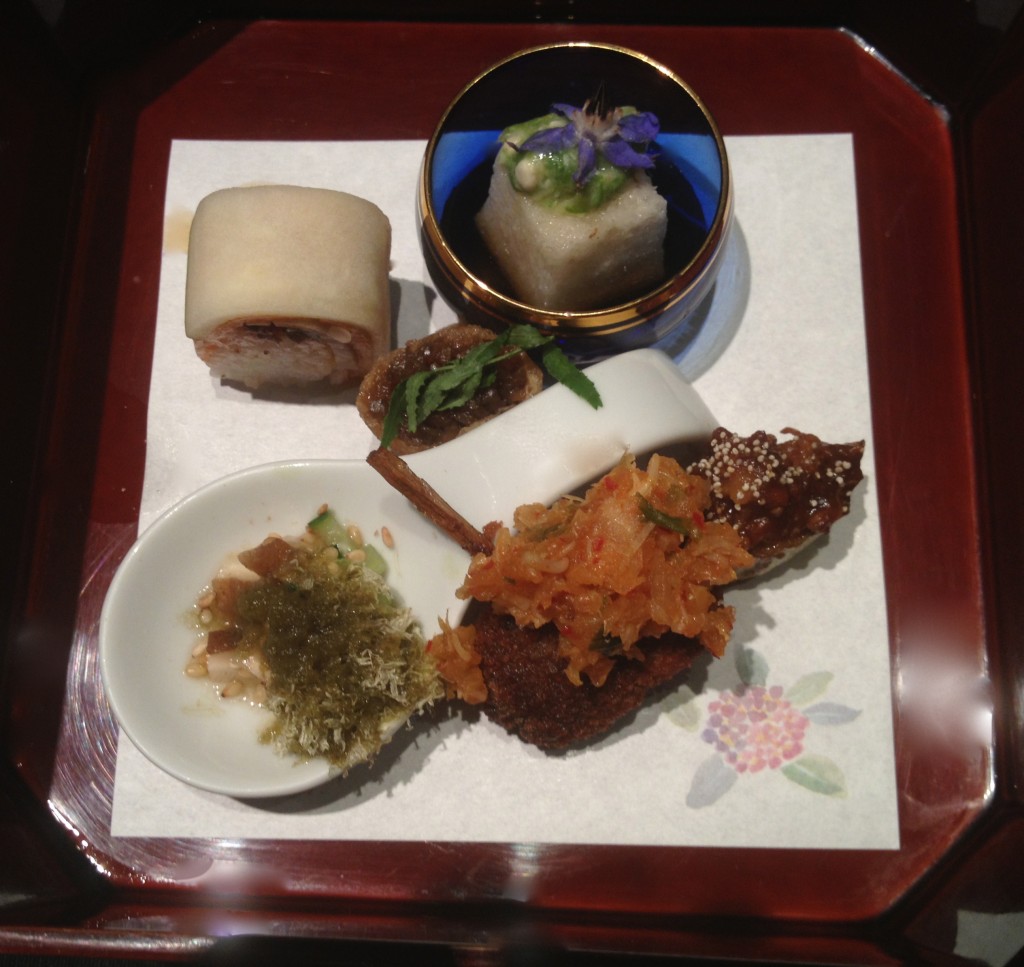
Chef: With a restaurant in Kyoto, Hawaii and now in Paris the chef Eichi Edakuni has been expanding his food empire globally, yet he is not just another chef just marketing his name around and rarely stepping into the kitchen, but he is involved in each of his restaurants for a couple of months each year.
Food: Creative, market-fresh and high quality ingredients. The six to eight-course set menu changes slightly with the daily offer on the market, but then each month it is totally reinvented, so it is always interesting to come for a dinner here (it is open only for dinner).
The taste extravaganza starts with a small appetizer called Sakizuke such as pickled vegetables, some fish, seafood or other refreshing small plate. Then it moves to a seasonally themed Hassun consisting of a number of dishes arranged around one sushi. Ours was a delicate sesame infused tofu cube decorated with purple edible flowers, which was mesmerizing with its richness and depth. The sushi roll had a thin layer of salmon and a pinch of seasoning to balance the course by its drier texture. A marinated fish with pickles and condiments was the dominating force of the hassun and a refreshing savoury seaweed and a juicy jelly added a zing. A perfect harmony in one diverse course, that many of the three Michelin star restaurants can only dream about!
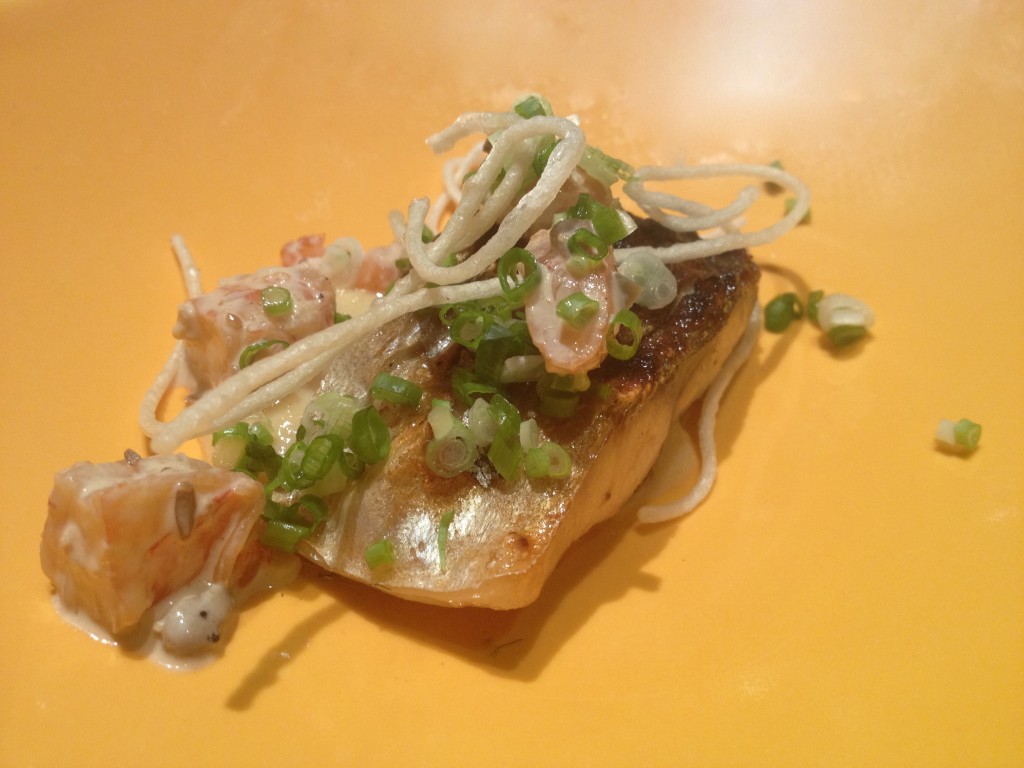
Before moving to a sushi themed course we were treated to a warm simmering cup of a Pan-fried tofu in a mushroom broth. Clear, pure and elegant preparing our palates for the raw fish in the sushi. Uni was the flavour queen of the blue-colored hand-painted plate. Smartly accompanied by sticky rice next to a sushi with a more Western taste friendly tuna the distinctive, and for some unpalatable, sea creature was made to be appreciated by everyone.
Next came another warm fish served sprinkled with chopped scallions and crispy rice noodles in a gentle creamy sauce. The fish did not get lost in this disguise and its soft texture played a fair game with the condiments enhancing its gentleness.
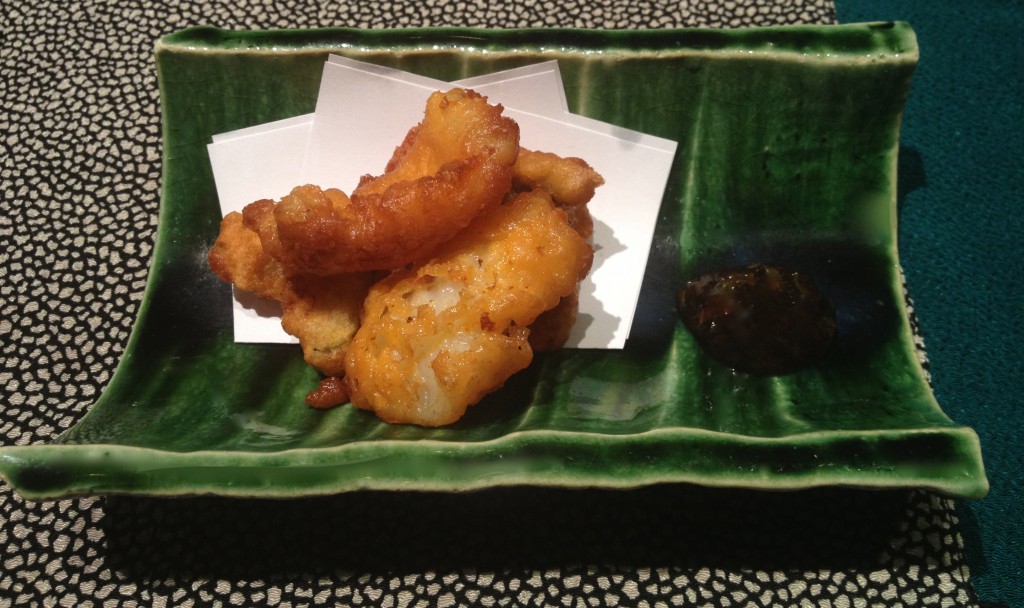
A time for some tempura after all these steamed, seared and natural creations. The deep-fried pieces of shrimp were accompanied by zesty tempura sauce, that removed some of the oilyness of this dish. The secret of a perfect tempura is not keep it crisp and not too integrated with its inside contents, so these can keep its moisture and flavour after deep-frying.
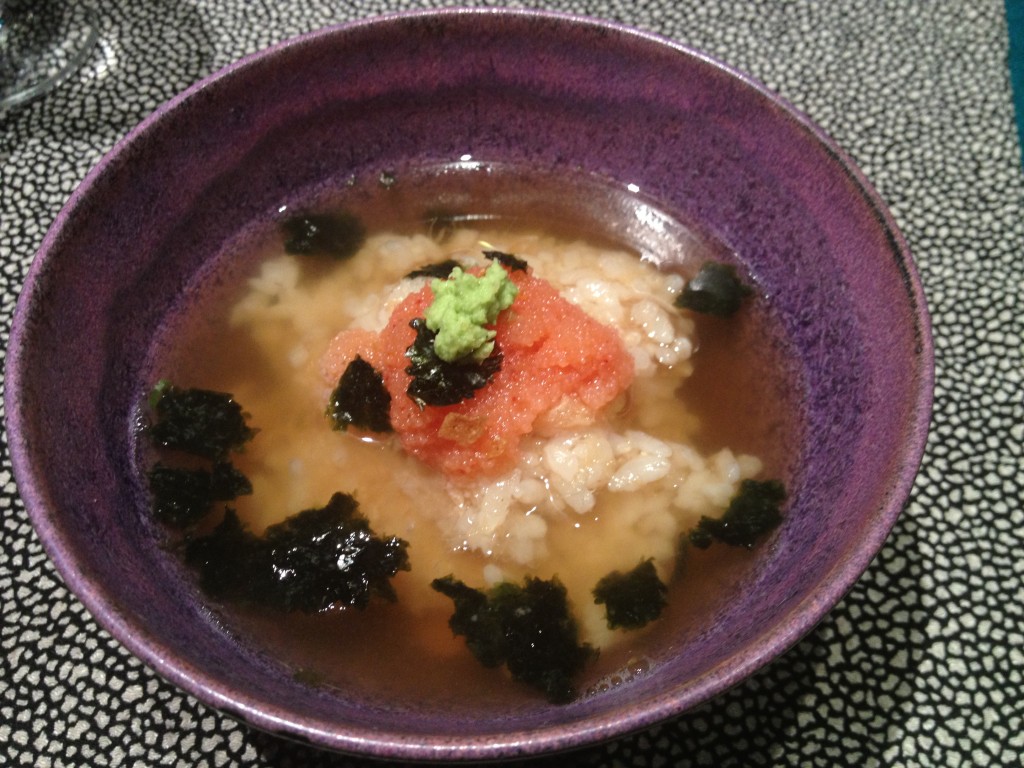
Tome-wan in the form of a Miso broth with rice, seaweed, radish and wasabi came just before the final dessert. The nourishing soup was the last belly warming soother preparing the body for some cooling red fruit and herbs sorbet cleaning the palate ahead of the custard-like sweet delicacy served with generous ice cream.
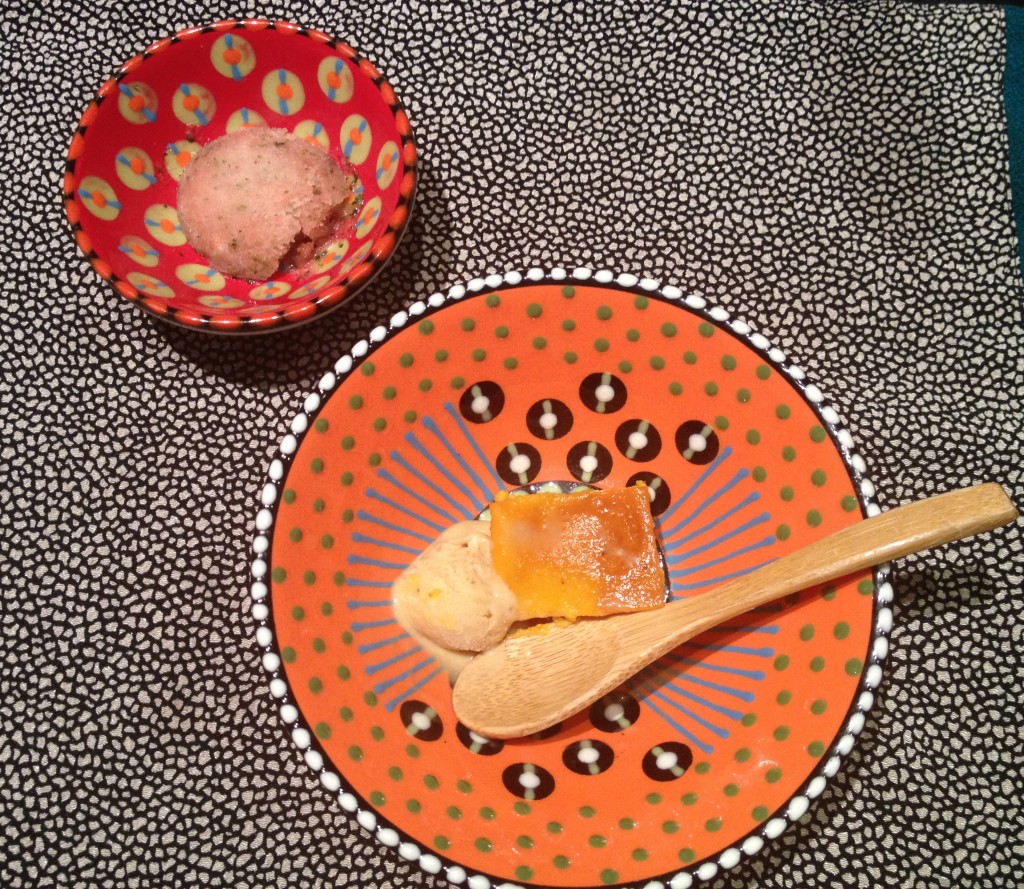
Drinks: An aperitif of a sparkling Shuwa sake with citrusy yuzu, this low-alcohol (6%) teaser made from fermented rice was so enjoyable and easy to drink that one could end up drinking a bottle on his own. Behold as the range of still dry sake, shochu (25% spirit made with sweet potato, rice, shiso leaf, or other japanese grains and fruits) as well as some French wines are quite good too. The wine list changes often, but mostly these are wines suitable for the chef’s style of cooking. Non-alcoholic japanese drinks such as the milky calpis and green tea are also available.
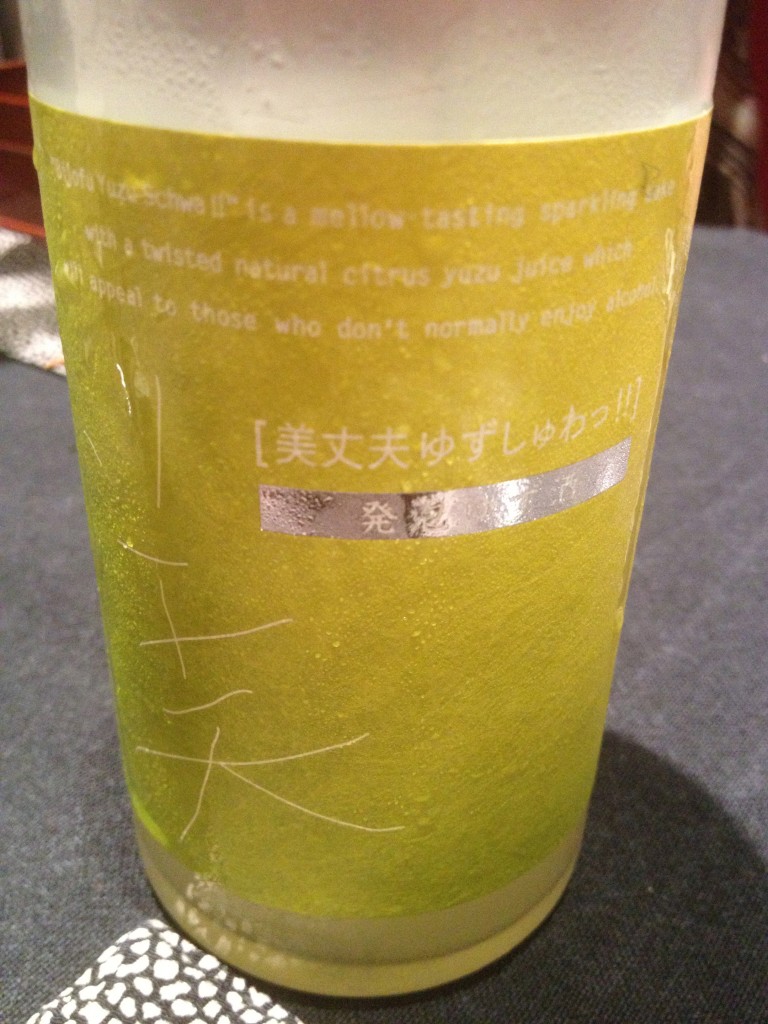
Cuisine: Japanese kaiseki.
Visit: June 2013
Price: Medium (for kaiseki and Paris a good deal for how excellent the food is).
Opening hours: Dinner only Tue-Sat: 7:00–11:00 pm; Closed Sun&Mon.
Address: 8 Rue Garreau, 18th Arrondissement; 75018 Paris, France.
Contact: Tel:+(33) 1 42 54 23 92
Look at their website for a truly japanese artistic experience, but the text is in Japanese so do not expect to read much unless you mastered the language.

